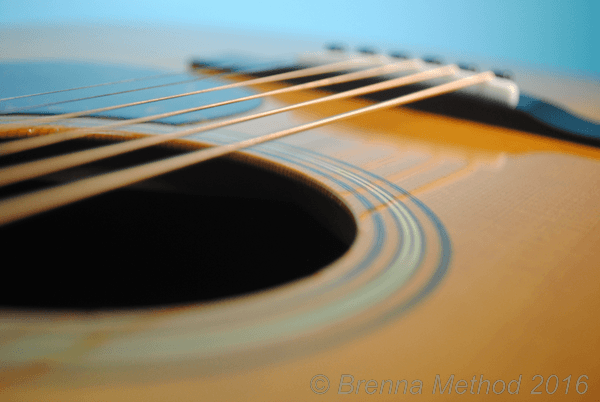related:
Songwriting: How to Stay Creative
The Simple Way To Create Exotic Guitar Chords
Getting Started
Sometimes a song seems to write itself. You’re messing around with chords and you hit on a great combination and a funky groove. Or you overhear someone utter a phrase and realize it’s a great chorus hook. Other times songwriting is painstaking and difficult and you come up empty handed. One key to successful songwriting is simply persistence. Show up often and build momentum, and sooner or later fragments come together and the damn breaks. Practice helps, and you learn along the way from both your successes and your failures. It also helps immensely to have a few songwriting tricks you can rely on to jumpstart new ideas. The catalyst for a new song can be a title or lyric, a melody, a rhythm, or chord progression.
Keys and Chords
To write a chord progression choose a key and begin with chords whose roots are the notes of that key, and whose notes are also drawn from the key. For example the notes of the G major scale are G A B C D E F#. When we build triads (3 note chords) from each of these notes using only the notes in the key of G major we get the following chords: G, Am, Bm, C, D Em, and F#dim. Since the F# diminished chord is much more dissonant than the major and minor chords it doesn’t blend well with them, so we’ll often leave it out. That leaves six chords that will sound good together in many combinations. Since the key of E minor includes the same notes as the key of G major, you can write minor key progressions with these same chords by structuring your progressions to center around Em rather than around G.
A more serendipitous approach is to play a simple open position chord and move it to different places on the fretboard. A whole new world of sound can emerge from this process.
Groove
Most of us have a “go to” rhythm we automatically play first. To break out of this rut go through other songs you know and play their rhythms on just a pair of chords to settle into each groove. Pick one that feels good, perhaps one that you haven’t used often, and sing along allowing the chords and rhythm to lead you to a melody. Change the chords and add more when you feel like broadening the harmony. As your melody emerges sing it using whatever sounds or words arise first, don’t focus yet on coherence or message. In the early years of the Beatles John Lennon and Paul McCartney usually just sang nonsense syllables in this stage of writing a song. Developing lyrics came after the initial chords, melody, and rhythm were in place.
Lyric Hook
To generate lyric ideas ask yourself questions: How do you feel? Who are you speaking to? Where does your story take place? What do you want to say? How do you want to say it, for example with a linear narrative or more obliquely with poetic and associative imagery? Write all of your lyric ideas down before organizing or editing, just run with each idea and let it flow. Indulging in criticism or self-judgement at this stage will kill your creativity. Think about rhyme schemes and key words. Use onomatopoeia. Let go into stream of consciousness.
Melody
We’ve already used chords and rhythm to suggest melody. Another way is to start with melody. Record yourself improvising melodic phrases vocally or on your instrument. Identify phrases you like, and pair each with a new phrase in a call-and-response or question-and-answer pattern. Repeat the first phrase of a pair, and sing a variation on its response: now you have a four-line melody with an A-B-A-C form. Play with vocalizations, pure sound that fits your phrasing and may suggest words to you. Let words emerge from your unconscious to fit your melodies.
As you generate a variety of musical and lyric ideas, record them, walk away for a few hours or a few days, then come back with an open mind and listen. Select the fragments that resonate with you to develop into a song and leave behind the rest. Remember that the best songs are a genuine expression of their authors so trust your instincts and first impressions. Don’t overthink it. Whether you are writing a deeply personal song or crafting a story song about imaginary characters, gut check that it really lands with you. Don’t guess what others want to hear or try to impress. The songwriting that moves you will move others too.
© 2014 Brenna Method Music Studios (updated January 2018)


Your article has good ideas for writing melodies. The reminder to put your work down for a while and then review it after some time has past is a worthwhile suggestion. I overlook both things when I song write, so maybe in the future I’ll focus on those ideas more. If it’s cool, here’s a link to a songwriting outline I wrote up while brainstorming ideas for composing: https://www.scribd.com/doc/74645771/Song-Writing
Thanks Nils, I checked out your songwriting outline, it’s full of good ideas, thanks for posting the link!